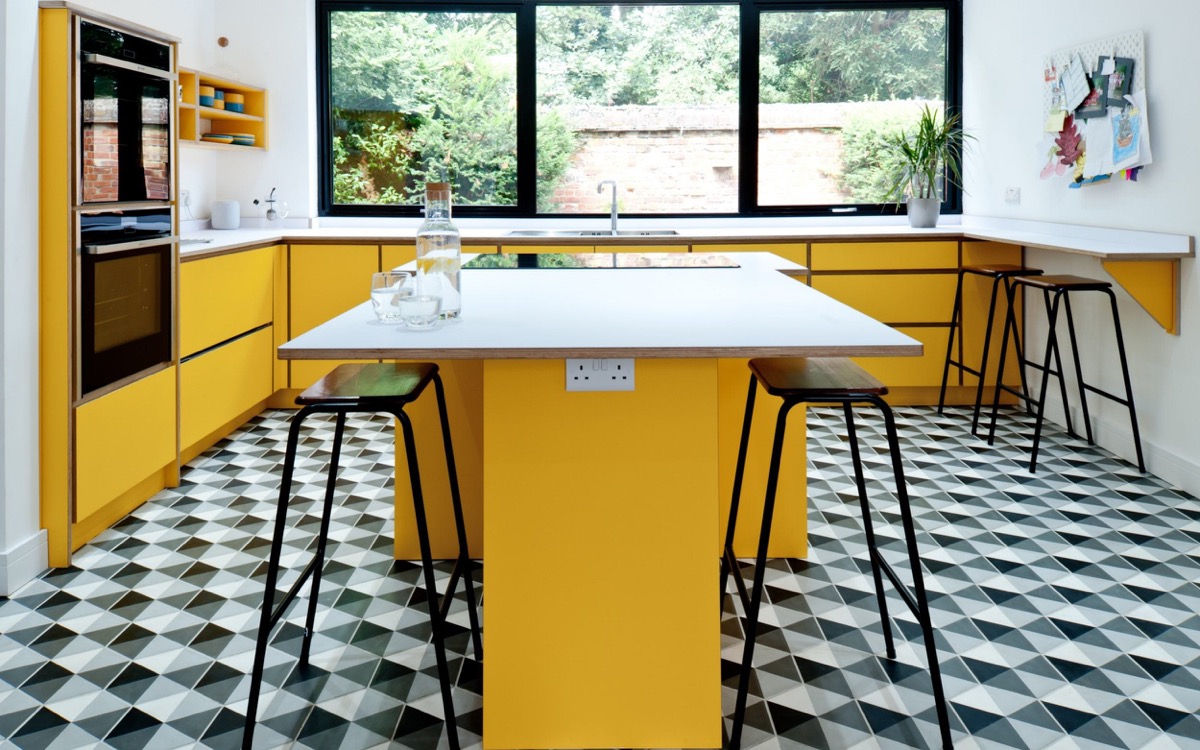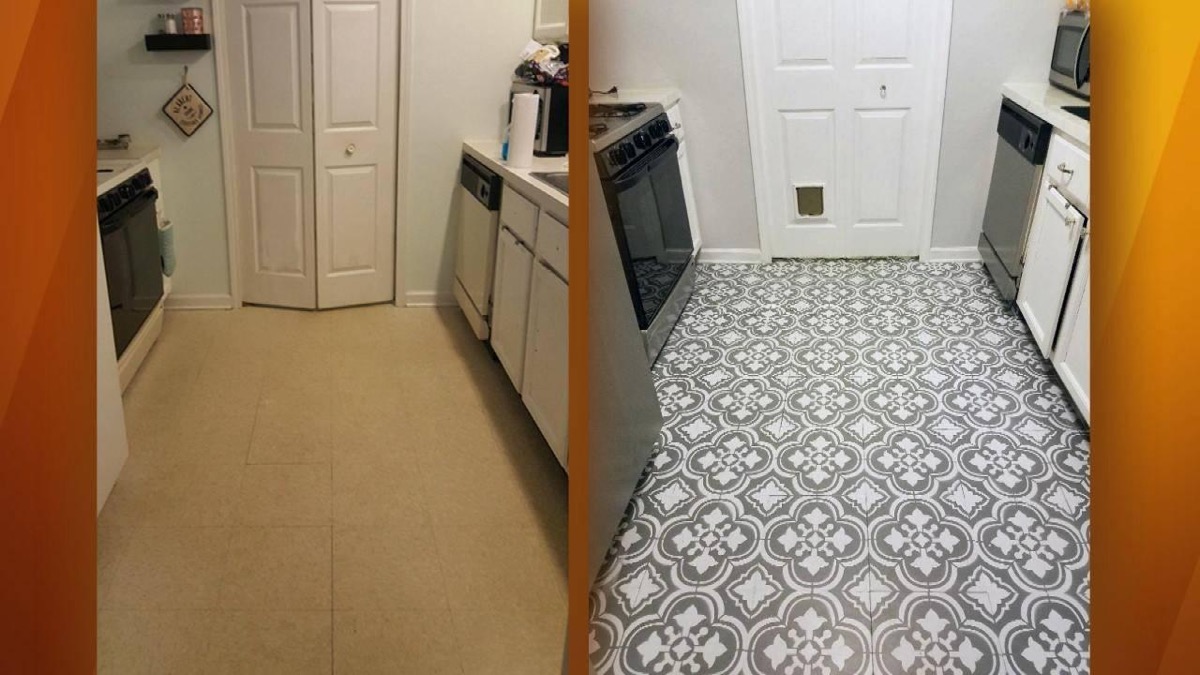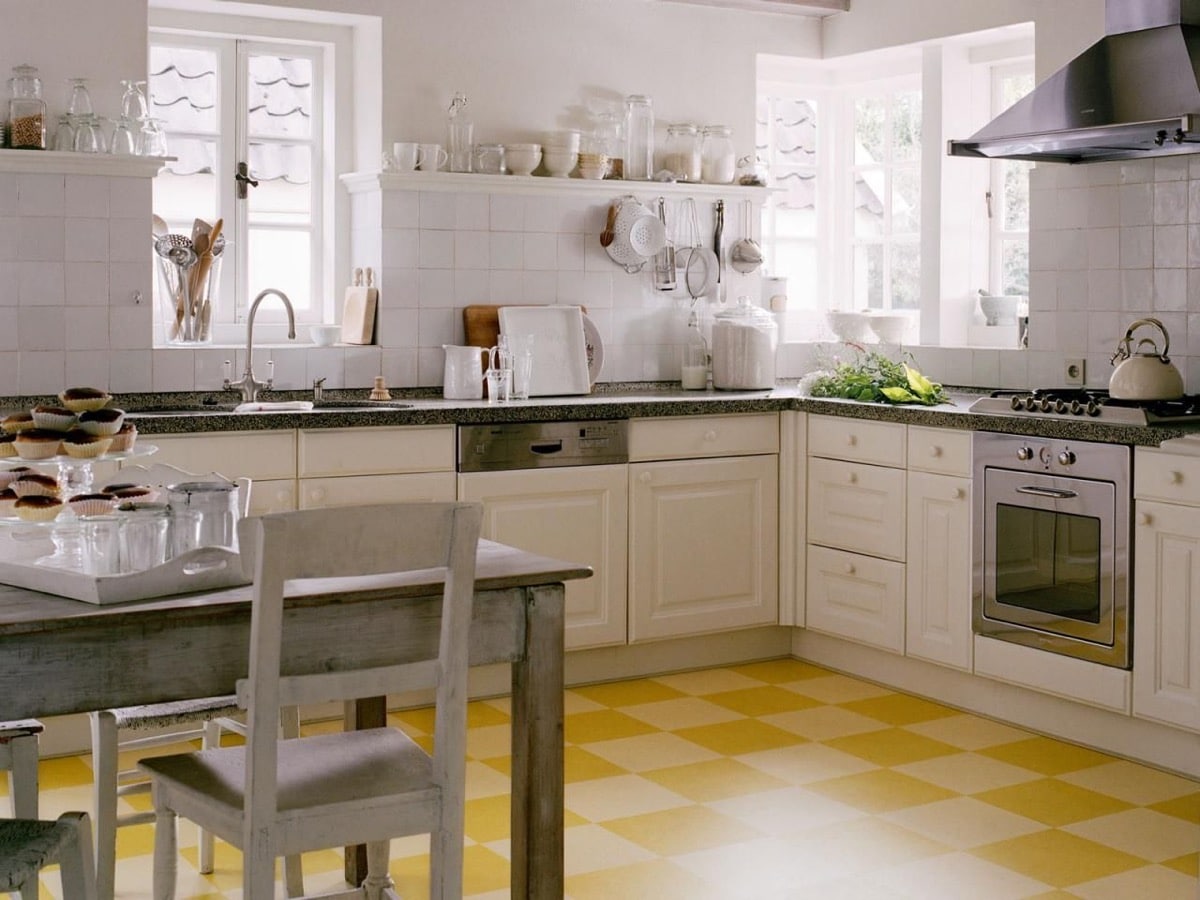
Linoleum flooring is a strong, durable and strong building material. Stain wings, antimicrobial and ecological. All the features that make it perfect for a kitchen. However, It lost popularity in the early 1950s, usurped by slightly less expensive and interesting vinyl and rubber mosaic products.
Linoleum flooring
In the 1950s, linoleum suffered from an obvious perception problem. At this time, linoleum had been a standard material for flooring in kitchens for more than 80 years, and although it was very durable, people were beginning to tire of the standard old look.
By contrast, rubber, vinyl, and other innovative flooring materials were just hitting the market with exciting new designs, and They greatly attracted consumers who wanted to be on the cutting edge.
This was exacerbated by the fact that there were a number of low-quality materials that were manufactured and marketed under the name linoleum. When these sale products began to warp, crack and crumble, it was the linoleum that got the blame.

Recently, however, there has been a renewed interest in linoleum as a residential flooring material, thanks to consumers drawn in by the fact that linoleum is a natural material without the environmental drawbacks of synthetic vinyl flooring. Although linoleum is even more common in high traffic commercial applications, it is increasingly common in residential construction, including kitchens.
Benefits of linoleum flooring in a kitchen
There are several distinct advantages to using vinyl flooring in a kitchen:
- An ecological material: Linoleum is made primarily from linseed oil, wood flour, cork powder, and sometimes limestone powder added for strength. Most of the components are renewable and do not pollute landfills. Materials break down easily in landfills, unlike vinyl. Linoleum can also burn without producing harmful fumes like vinyl does.
- Scratches are less visible: Unlike vinyl, linoleum is a solid material from top to bottom throughout its thickness, and therefore scratches and gouges are not as obvious as they are with vinyl.
- A resistant surface: The presence of cork dust in linoleum creates some "sagging" and bouncing underfoot, which can be an important consideration if you spend a lot of time standing in the kitchen.
- Non-allergenic and antimicrobial: For people with chemical sensitivities, linoleum does not cause allergic reactions, as vinyl floors sometimes do. Like vinyl, linoleum cleans easily, making it naturally resistant to bacteria. It also tends to be antistatic, so dust and dirt do not adhere to its surface and cause respiratory risks for people with respiratory problems.
- A durable surface: manufacturers often guarantee linoleum for 25 years, and in practice you may see this floor last even longer; Life expectancy of 40 years is not uncommon.

- Ideal for retro styles: Because it has a long and varied history, this material fits better with classic or retro designs than vinyl, rubber, and other more modern flooring options. Many people believe that the recent resurgence in popularity of linoleum is due to the natural cyclical nature of design trends. This is an ideal flooring option where a mid-century modern design feel is desired.
- Simple maintenance: Like vinyl, linoleum is fairly easy to clean and care for, requiring little more than an occasional sweep and damp cloth. For stains, spot cleaning can be accomplished with a non-abrasive pH balanced cleaning agent. While soaking a linoleum floor in water is not recommended, it can be cleaned with a damp cloth about once a month.
- Cheap: Compared to hardwood or ceramic tiles, linoleum is a relatively inexpensive flooring material, especially when considering its long service life.
Disadvantages of linoleum flooring for kitchens
Not everything has to be that good, so it also has the downside of being susceptible to moisture damage. Water is the biggest problem when using linoleum in a kitchen. Made of natural material (mainly linseed oil, cork powder, and wood flour), the surface of linoleum is porous and can absorb spills and liquids.

If left unattended, spills can irrevocably damage linoleum. Sealing is essential to avoid damage from water and staining agents. Linoleum is not suitable for use in a kitchen that is below ground level, where moisture seeping from a concrete slab can affect it. It also has other drawbacks to take into account:
- Installation is more difficult
- Can be dented
- It darkens or turns yellow over time